The 15 Best Pixar Scenes Ranked
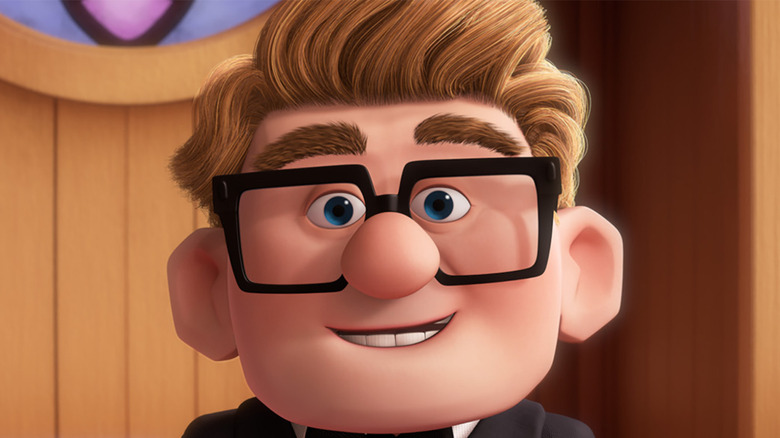
Over just a few short decades, Pixar has perfected the art of ripping your heart out and showing it to you. For the celebrated animation studio, it's not enough to just make entertaining films for young children. Pixar's filmmakers consistently challenge themselves to produce complex and thoughtful movies that work for both kids and adults. Throughout the studio's tenure, its very best scenes have one of two of these qualities, if not both: immense visual creativity and powerful emotional resonance.
At its best, Pixar is uniquely capable of making audiences attached to its characters, leading to scenes that are devastating, funny, heartwarming, and a pleasure to look at. Although the studio has produced its share of underwhelming films, there is no discernable drop-off in quality at any point in its history, and no period during which you could accuse Pixar of being anything less than ambitious. Sure, there's an unnecessary sequel or two on Pixar's filmography, but overall Pixar's has a consistency that any other studio would be proud of. That commitment to pushing the limit has led to a huge number of memorable scenes, many of which became classics the second they debuted. Here are 15 of the best.
Toy Story 4 — The Return Of Bo Peep
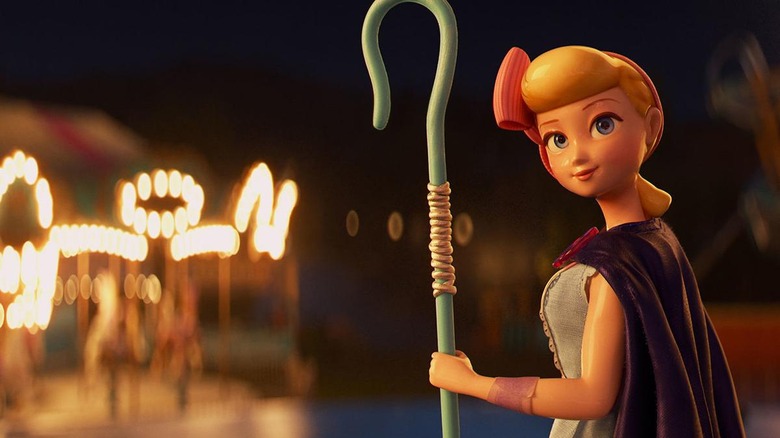
Although "Toy Story 4" was generally well-received by both audiences and critics, it has a somewhat dour, resigned quality to it. Woody, previously a fount of energy and optimism, comes across as tired, his confidence in his purpose shaken. So, it makes a certain amount of sense that the most memorable scene from the film comes when a long-lost character re-enters the story, one who is filled with conviction and self-assurance: Woody's ex-girlfriend, Bo Peep.
When we last saw Bo, she was just a sweet little porcelain doll tending to her flock of sheep. Here, she's spent seven years living life on her own terms, allowing her to become bold, resourceful, and emotionally fulfilled. Whereas Woody sees being a lost toy as a tragedy, Bo regards it as freedom. Through her thoughtful and empowering reintroduction, "Toy Story 4" pushes its lead character to consider a life outside of service to a single kid, helping Woody find new purpose in the transitory moments of joy he can bring to hundreds of kids passing through the carnival.
Finding Dory — Dory Finds Her Parents
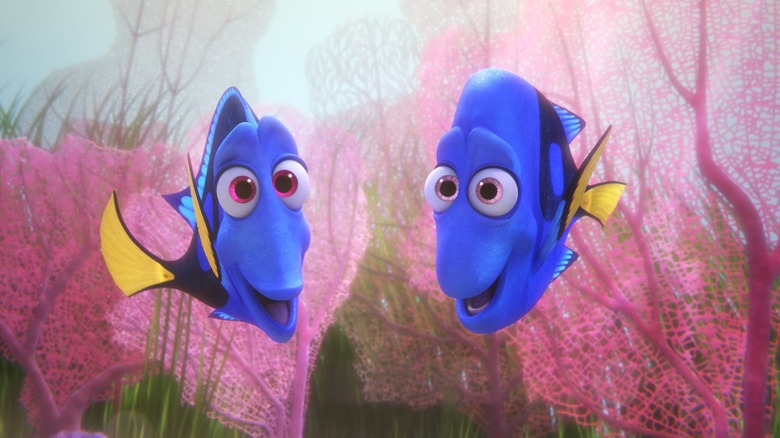
In "Finding Nemo," Dory is comic relief. Her forgetfulness is a running gag and a constant source of exasperation for Marlin as he tries to track down his missing son. But in "Finding Dory," with the focus entirely on Dory, there's room for a more complex investigation of the blue tang's short-term memory loss. When Dory was a little fish, she was separated from her parents. Here, she attempts to track them down. A sequence in which Dory gets directions that will lead her straight to her mother and father seems straightforward, but Dory can't keep the instructions in her head long enough to get to where she needs to go.
It's devastating to watch Dory spinning in circles, trying as hard as she can to hang onto a single nugget of information. But then, incredibly, she finds them. And she apologizes. A version of Dory who is self-aware enough to recognize her shortcomings and to be frustrated by them makes this entire sequence much more emotionally charged, adding depth and gravitas to a lark like "Finding Dory."
WALL-E — WALL-E Watches Hello, Dolly!
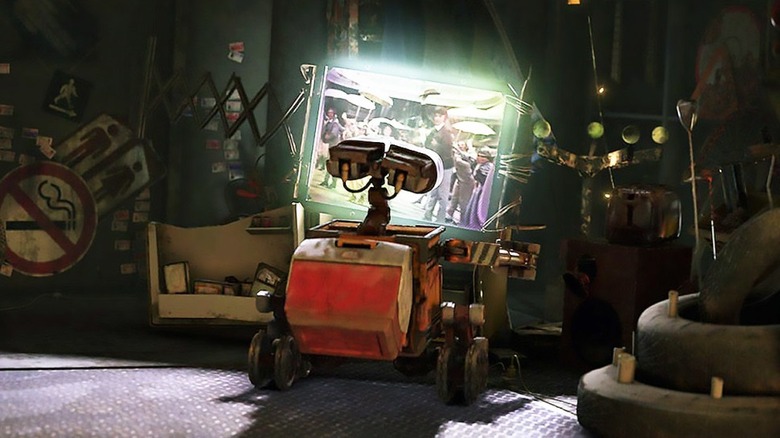
On paper, "WALL-E" shouldn't work. It revolves around the last robot left on earth, and there's not really any dialogue in the first 20 minutes of the film. That's kind of a tall order, especially for kids. Yet, incredibly, Pixar manages to imbue the little, isolated, and silent robot with so much personality that you can't help but fall in love with him.
After a long shift of compacting garbage, WALL-E returns to his makeshift home, where he's accumulated knick-knacks and miscellaneous human items. One night, he watches a worn copy of "Hello, Dolly!" on his tiny, recycled television set. WALL-E's large, teardrop-shaped eyes gaze at the screen during a love ballad as he eagerly tries to understand the emotions on display. As the two characters join hands, he takes his two robotic arms and interlaces them, imitating human intimacy. It's a magical, touching moment, and one in which our hearts ache for this lonely little robot.
Luca — The Sky Full Of Fish
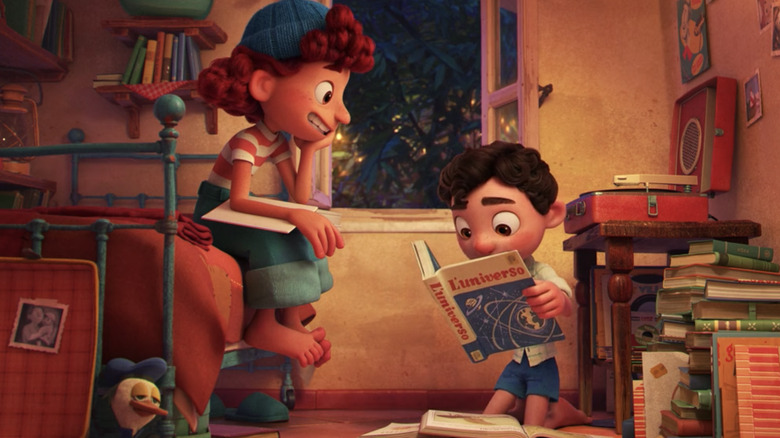
"Luca" may be the new kid on the block in Pixar's world, and it might not have earned the same, immediate critical praise as some of the company's other films, but it's an utterly charming, understated gem of a movie. While Luca lives underwater off the Italian coast, his world is small. It expands after he befriends Alberto and visits the fishing village of Portorosso. But Luca is a boy overflowing with natural curiosity, and there's so much more he wants to know. When Giulia shows him a telescope, we watch as Luca is exposed to a literal universe of possibilities.
The wonder with which Luca looks at the world, and how desperate he is to learn about everything, is enchanting. And as much as "Luca" is primarily about the relationship between Luca and Alberto, he and Giulia have a lovely moment here as well. Luca is experiencing something new, but so is Giulia: This is the first time she's met someone who shares her unbridled enthusiasm for life. It's a very sweet piece of character development, elevated by a musical score that soars as the two children imagine flying through the stars.
Ratatouille — Remy's First Restaurant
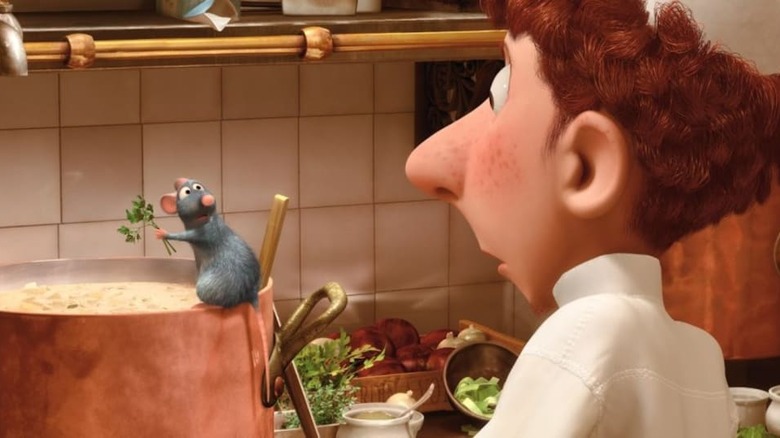
As far back as he can remember, Remy the rat has wanted to be a chef. When he heads to Paris, he can't resist peeking at the inner workings of the restaurant formerly owned by his hero, Chef Auguste Gusteau. Watching the chefs from a roof window, he is in heaven. But then, disaster strikes: Garbage boy Alfredo Linguini knocks over a pot of soup, then adds random ingredients to the pot in a desperate bid to hide his mistake.
Overcome with indignation at the ruined soup, Remy falls through the skylight and into the kitchen, an environment as appealing as it is dangerous for the rat. As Remy makes his escape, he pauses by the soup; he can't stop himself from fixing it. The animation of Remy cooking is lyrical and artistic, establishing Remy as a prodigy who is finally in his element. It's delightful to see him work, blissfully tuning out the kitchen's chaos and the very real threat the other cooks pose.
A Bug's Life — P.T. Flea's Greatest Circus
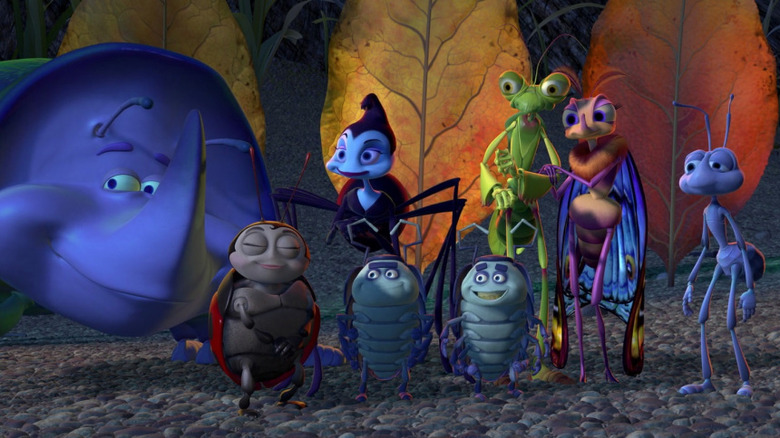
Sandwiched between several more famous Pixar movies, "A Bug's Life" never seems to get the credit it deserves. It's one of Pixar's most underrated gems, with a really creative take on bugs' day-to-day lives that's especially rewarding upon rewatch. Just look at the sequence at P.T. Flea's Circus. A troupe of performers execute a death-defying stunt in which a spider must spin a web fast enough to catch two pillbugs before they're shot into a piece of fly paper. And, oh, by the way, they're all blindfolded.
Every element of the scene is perfectly structured and timed, from the frenetic emceeing of P.T. Flea to the reaction shots of the flies in attendance to the grimly hilarious way that the stunt somehow spirals wildly out of control. It's Pixar's signature comedic sensibilities on full display, and it's absolutely a pleasure to look at. There's not much more you can ask for than that.
The Incredibles — No Capes!
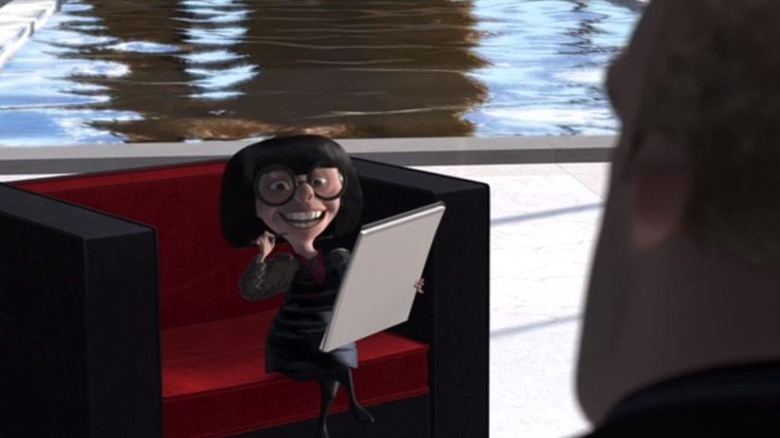
If there's one thing you can say about "The Incredibles," it's that Edna Mode steals the show. A droll, pint-sized fashion designer, Edna is the go-to woman for any and all superhero costumes in the Incredibles universe. She just has one rule: no capes. Is it because they're hopelessly cliched? Perhaps. But as Edna runs through a visual montage of different superheroes in capes, all of whom met their doom because of cape-related catastrophes, it's clear that there's something more at play here.
Edna likely feels guilt for having designed the costumes that would ultimately lead to the heroes' deaths. At any rate, even without reading into Edna's motivation for her legendary "no capes" rule, this scene shines a light on one of the film's most entertaining side characters, lets Pixar's animators flex their creative muscles, and gives us a fun look at creative designs for half-a-dozen different superheroes.
Monsters, Inc. — Code 2319
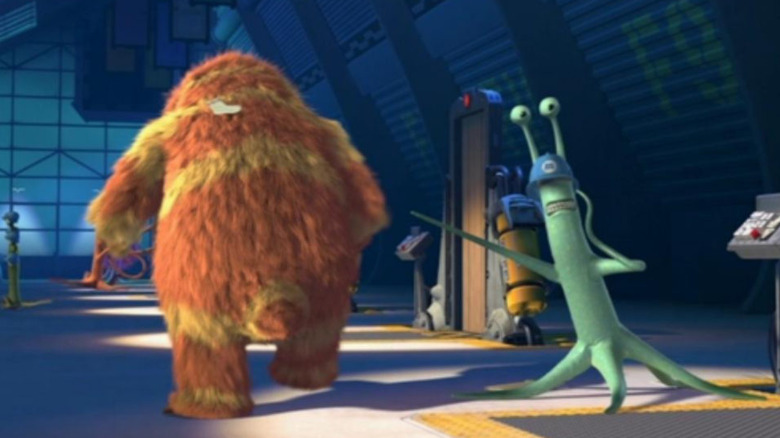
There are so many great moments in "Monsters, Inc." It was hard not to include one that featured Boo, the tiny human who steals the show from monsters Mike Wazowski (Billy Crystal) and Sulley (John Goodman). But there's a scene early on in the film that is so clever, so funny, and so well-constructed that it deserves a special mention.
When we first see the monsters at work, they operate at factory-level efficiency: head into a child's door, scare the child into producing energy-generating screams, and move on to the next in a matter of minutes. And then George, a good-natured monster with fluffy orange and yellow fur, ends up with a child's sock stuck on his back.
He has been contaminated, and a panicked Code 2319 is called. This leads to a full-on containment scenario carried out by a bunch of monsters in hazmat suits, who look like they're reacting to a world-ending virus. All at once, this scene shows us the inner workings of Monsters, Inc., has some fun physical comedy, and introduces the central concept of the film: these monsters are deeply terrified by the children they scare for a living.
Toy Story 3 — The Toys Accept Their Mortality
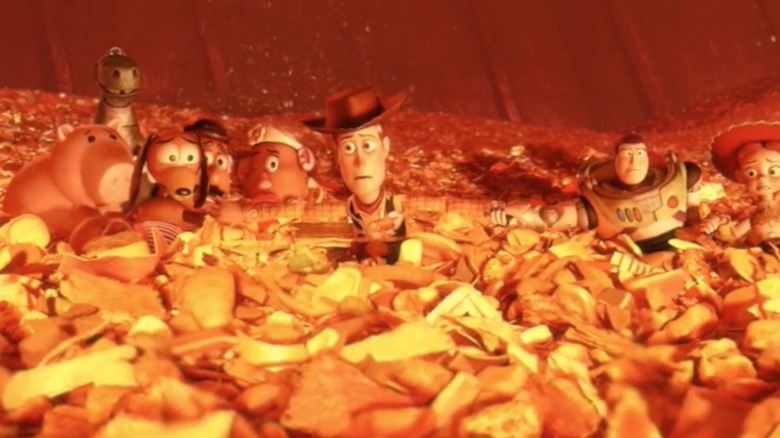
"Toy Story 3" is the last of the films in the series featuring Andy, as the boy we watched grow up in "Toy Story" and "Toy Story 2" headed off to college. It's no surprise, then, that the theme of "Toy Story 3" is letting go. With Andy too old to play with the toys, Woody, Buzz, and the rest must all accept being thrown out, placed in storage, or passed on to another child (or, in this case, several children, as they end up being loved fiercely by a group of rambunctious toddlers at a local daycare).
The movie's palpable sense of things ending takes on a much darker tone near the end of the movie, when the toys end up at the dump, falling ever closer to an incinerator that will destroy them. Sensing that they have no way out, Woody and Buzz lock eyes in grim resignation, and the group of toys all lock arms, accepting their impending death together. Yikes.
Finding Nemo — The Fish Tank
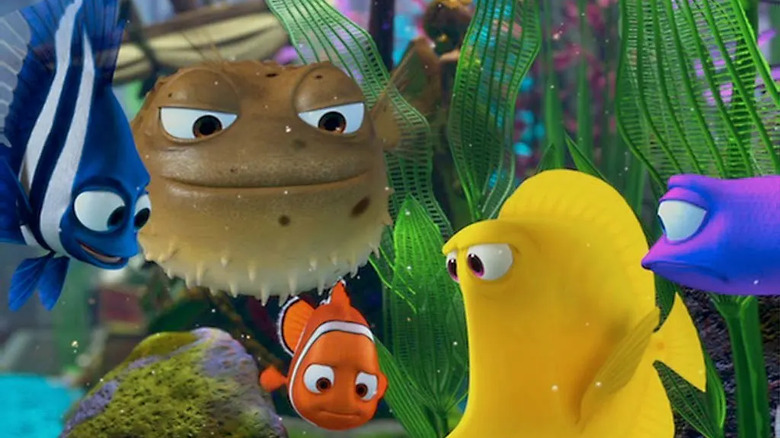
"Finding Nemo" has plenty of scenes that are almost unfairly emotional; after all, this is the story of a father whose wife and hundreds of children were eaten by a barracuda, and ends up separated by an entire ocean from the only child he has left. But Pixar has always intuitively understood how to balance the light and the dark, and how to create poignant scenes that coexist seamlessly alongside moments of humor and joy. The sequence where Nemo first meets all of the fish in the tank at the Sydney dentist's office is not only genuinely funny, it shows off how efficiently the makers of "Finding Nemo" introduce entire troupes of characters in a few short moments.
The captive fish have grown a little, shall we say, eccentric since being put in the fish tank. One is fiercely protective of the bubbles that rise from a tiny treasure chest. One is convinced that her reflection is actually her sister, Flo. They're all armchair dentists, commenting on their captor's technique whenever he has patients. Each character oozes personality, and together they create an engaging cast of secondary characters that sees Nemo through the second act of the film.
Toy Story — The Toys' Revenge
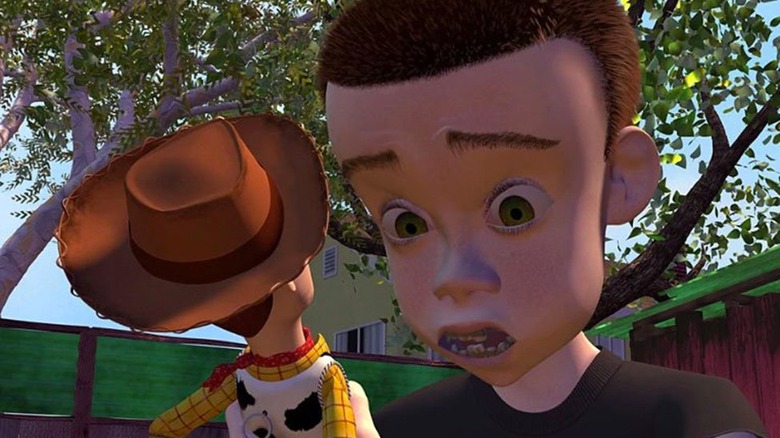
"Toy Story" is the film that launched Pixar as a brand, and all these years later is still one of its best. The number one scene in "Toy Story," though, also happens to be its weirdest. It comes totally out of left field, but also capitalizes on the film's underlying premise in a wildly creative way. We're talking, of course, about the scene that tackles the unspoken truth of the "Toy Story" universe: It would be absolutely terrifying if toys were alive.
If there's a villain in "Toy Story," it's Sid, the creepy boy next door who plays a little rough with his toys (and yeah, sometimes blows them up; you want to make a federal case out of it?). While most of "Toy Story" is a light-hearted romp, the scene in which the toys teach Sid a lesson gets dark. The ability to deftly switch gears on a dime, exemplified by this scene, is one of Pixar's greatest strengths; all of their films play with tone in a sophisticated manner. And it all starts here, with Tom Hanks admonishing Sid to play nice while decapitated action figures rise from the mud like something out of a zombie movie.
Inside Out — Take Her To The Moon For Me
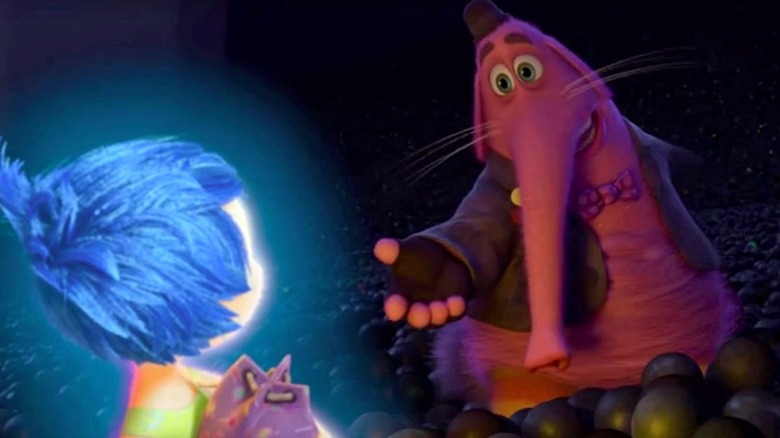
When you watch "Inside Out," you're expecting to see the emotions featured in the trailer: Joy, Sadness, Anger, Disgust, and Fear. But hidden within the depths of Riley's mind is the film's most pleasant surprise: Bing Bong, the cat-elephant-dolphin hybrid voiced by Richard Kind. He was Riley's imaginary friend when she was little, and they went on incredible make-believe adventures together. But by the time "Inside Out" takes place, Riley is a preteen, and has all but forgotten Bing Bong.
Bing Bong's love for Riley is endless, however, and his greatest wish is for Riley, his best friend, to remember him (if you're already getting weepy, buckle up; it's about to get a million times worse). When Bing Bong and Joy end up trapped in the Memory Dump, the place where all memories are permanently forgotten, they find Bing Bong's old wagon rocket, which they plan to use to escape. Each time, they fall short -- until Bing Bong sacrifices himself, jumping out of the wagon and allowing himself to be forgotten so that Riley can have a chance at being happy. Farewell, Bing Bong. You were too good for this world.
Toy Story 2 — When She Loved Me
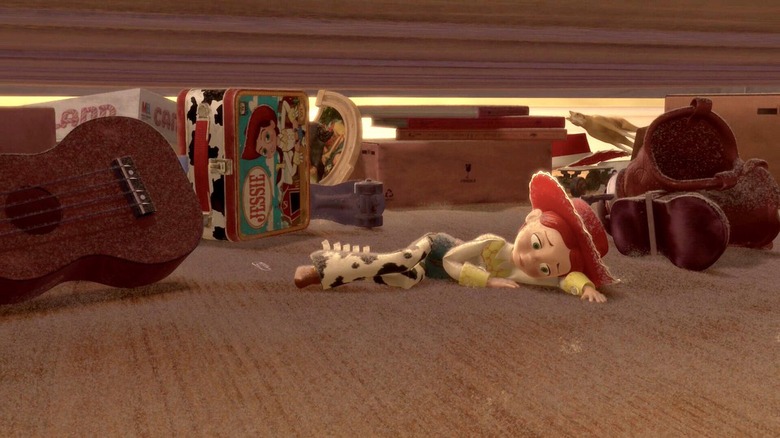
Look, when you play a Sarah Maclachlan song over a sad montage, you're pretty much guaranteed tears from your audience. In "Toy Story 2," Woody is kidnapped by Al of Al's Toy Barn, who plans to sell him off as part of a collector's set. There, Woody meets Jessie (Joan Cusack), who is overjoyed at the idea of being sent to a museum, and terrified of becoming attached to any one kid. Why does she have abandonment issues? It turns out that Jessie was once the beloved toy of a little girl named Emily -- only, as Emily grew up, Jessie was played with less and less.
"When She Loved Me" plays over a montage telling the story, and each image is heartbreaking: Jessie lying under the bed, covered in a thin layer of dust. The joy on Jesse's face as she's pulled out by a teenage Emily and put in her purse. The utter contentment as Jessie closes her eyes, overjoyed to finally be loved again. And then, the confusion and hurt when Emily leaves her in a donation box and drives away. It's hard to simply describe this scene without crying. Anyone who can actually watch it has an iron constitution.
Up — The Opening Montage
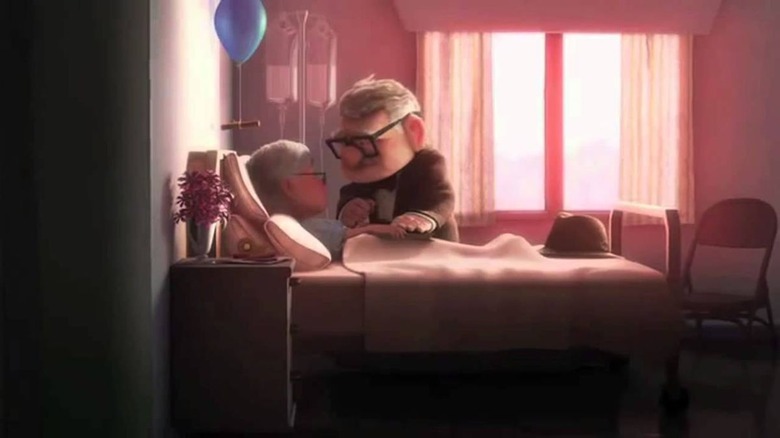
The first 10 minutes of "Up" are a masterclass in visual storytelling. Epitomizing the adage of "show, don't tell," "Up" uses these precious early moments to capture the life-long love of Carl and Ellie, following the couple from childhood to old age to Ellie's eventual death. It is a tremendously moving sequence, in part because of how breathtakingly ordinary it is. Carl and Ellie live a life that is, from the outside, utterly insignificant. It is a series of intimate triumphs and tragedies void of any of the grand adventures they dreamt of as children.
But it is these small moments -- picnics in the park and household repairs, quiet nights by the fire, bitter disappointments -- that make up a life. And it is staggeringly beautiful. The dramatic highs and lows that Pixar is able to achieve wordlessly (and seemingly effortlessly) reflect the work of artisans operating at peak creative capacity. It also puts them in an unenviable position: how on Earth are they going to top the first 10 minutes of the film?
Coco — Remember Me
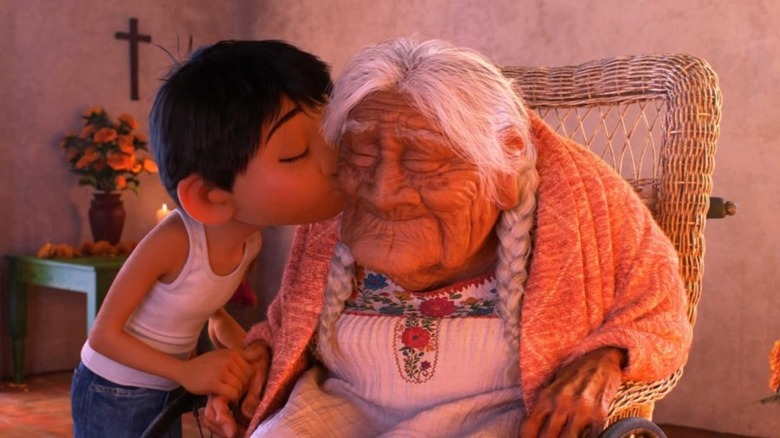
"Coco" is essentially a feature-length montage of tear-jerker moments; half of the film could have ended up on this list. But the most powerful scene in "Coco" comes near the end, when Miguel sings "Remember Me" to his great-grandmother, Coco, in an attempt to prevent her from forgetting her father, who used to sing the song to her as a child. Ancient and in the latter stages of dementia, Coco is all but lost to the world. But as Miguel sings the lyrics to the long-forgotten melody, Coco slowly comes back to life.
Her revival may not last, but in this moment, she is lucid, speaking about her father to her assembled descendants. In a way, her father becomes alive again, too. This scene drives home all of the essential themes of "Coco": the importance of family, the power of music, and how the greatest thing we can do for our loved ones is to pass on their stories. In the world of "Coco," you exist as long as there is one person alive on Earth who remembers you. In this way, our legacies give us the ability to live beyond death.
Read this next: The 10 Best Animated Flying Sequences
The post The 15 Best Pixar Scenes Ranked appeared first on /Film.
from /Film https://ift.tt/38pVpRj
No comments: